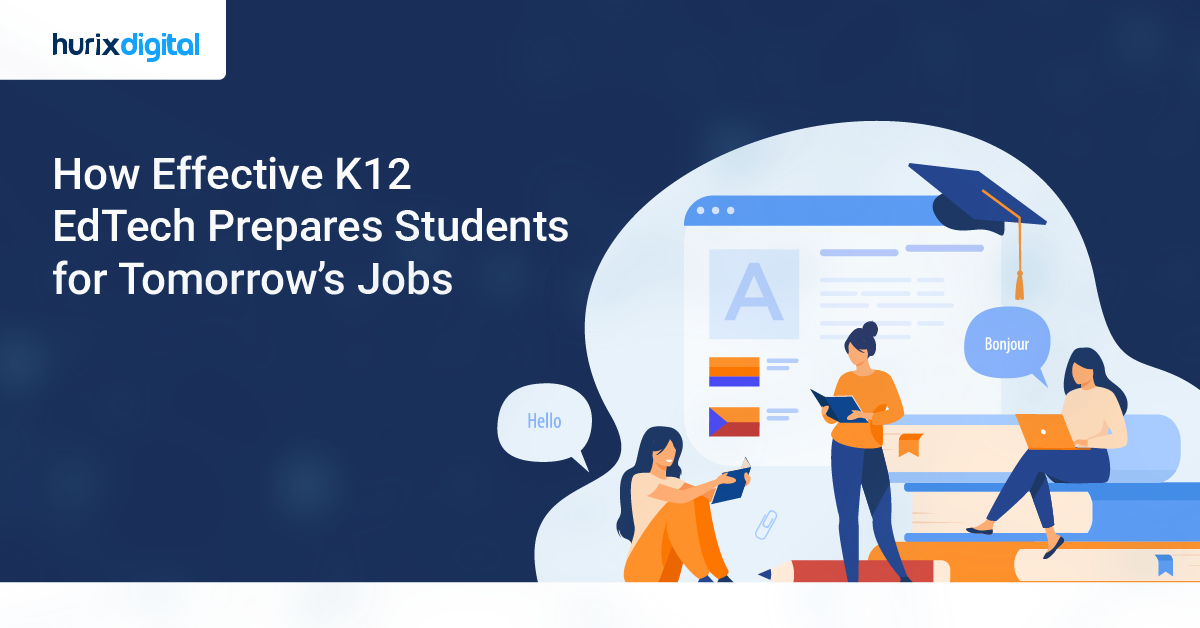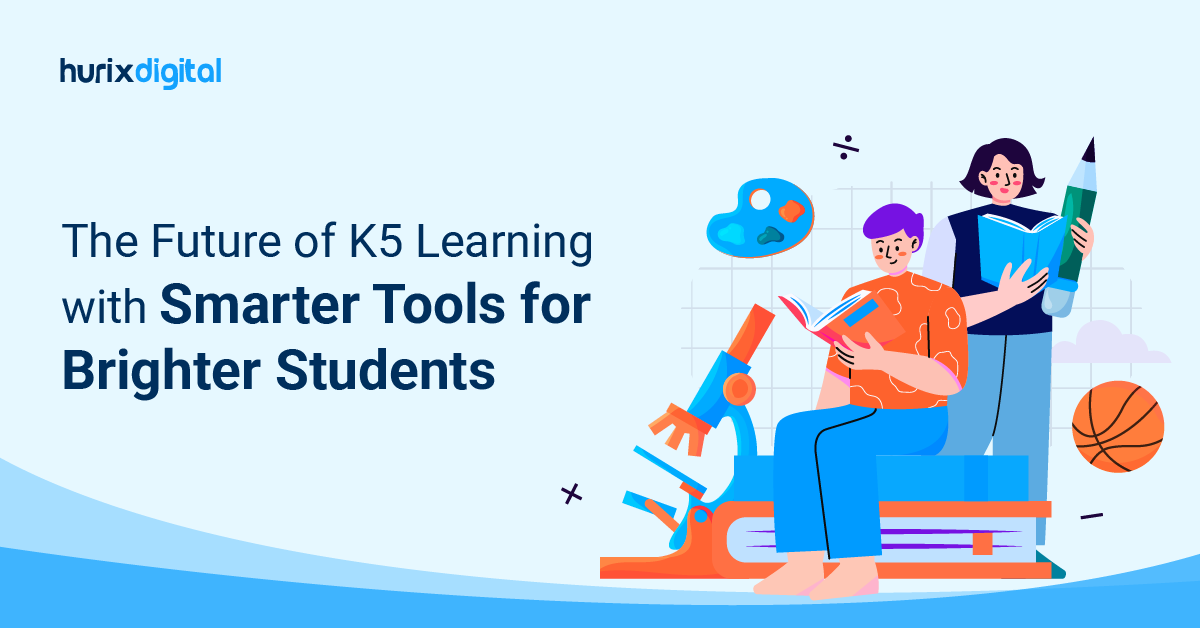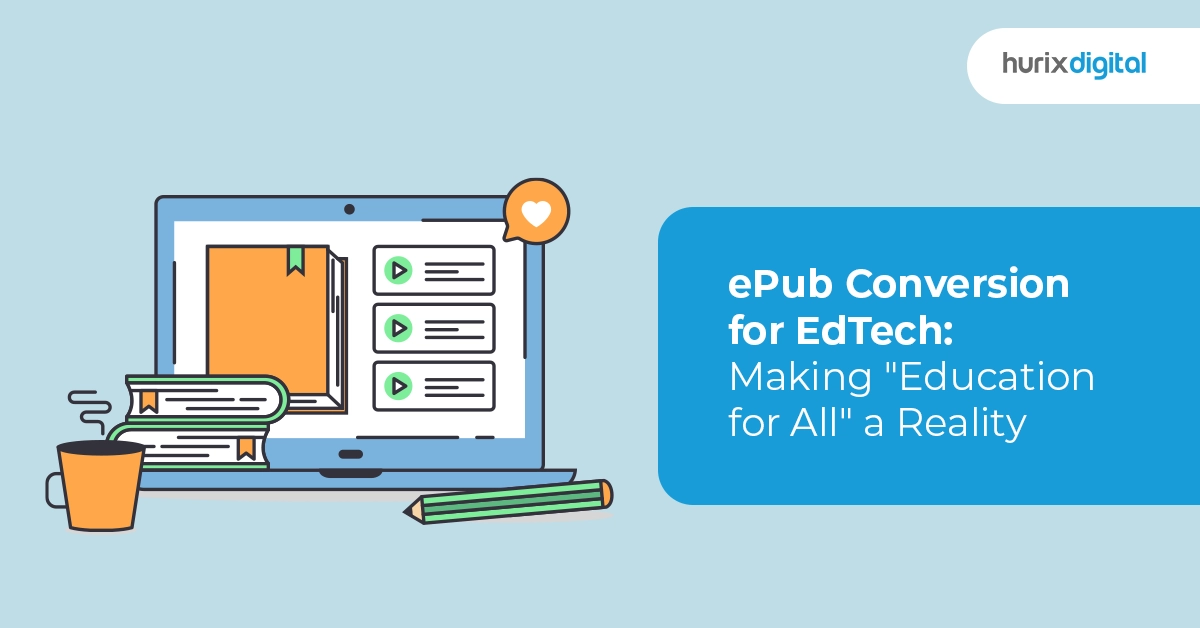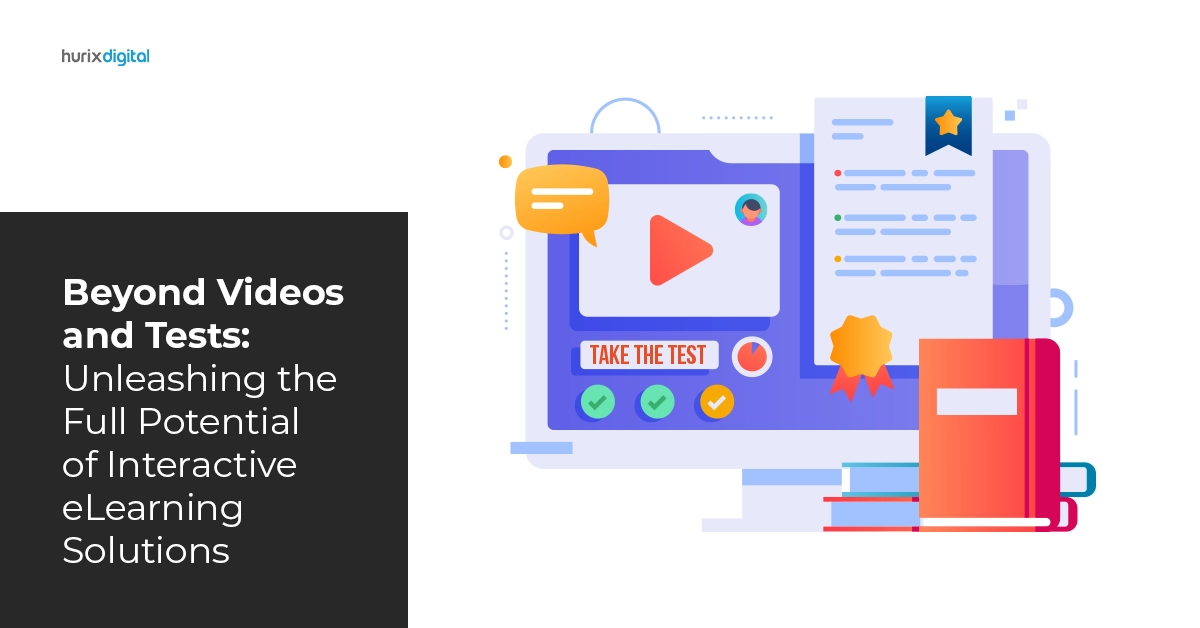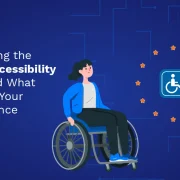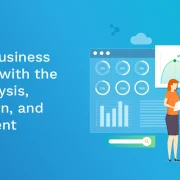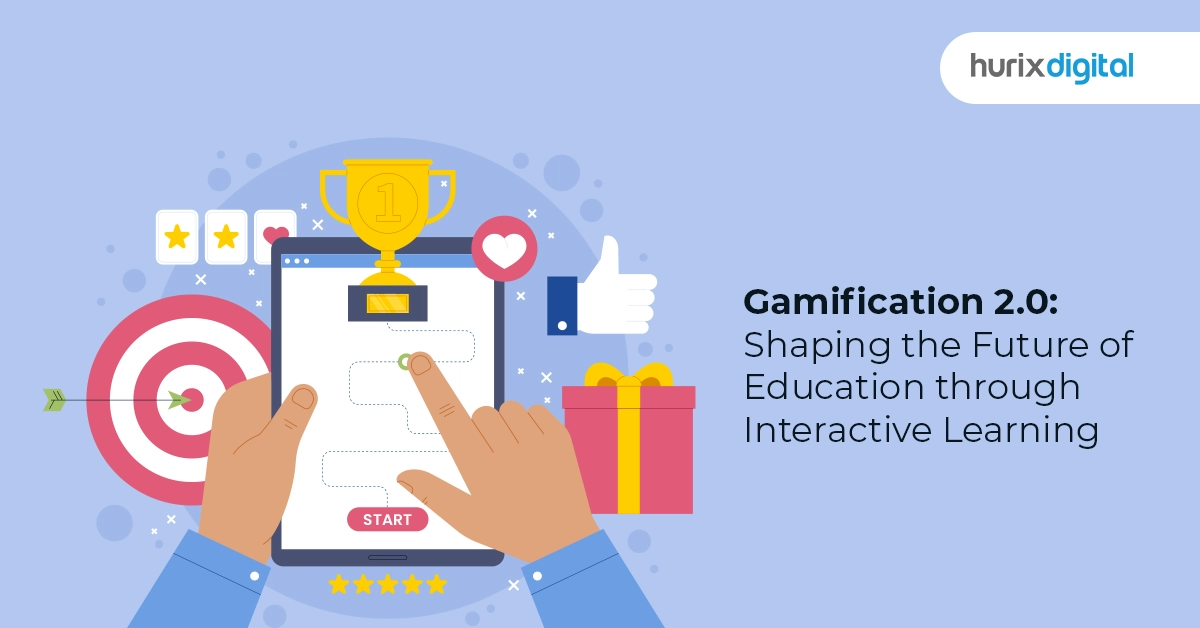
Gamification 2.0: Shaping the Future of Education through Interactive Learning
In an era where digital transformation is at its peak, the education sector is witnessing a revolutionary change through the concept of gamification in learning. This approach has morphed into a sophisticated model known as Gamification 2.0, leveraging the latest technologies to make learning more engaging, efficient, and enjoyable.
Read on further to explore the essence of gamification in education, its impact, and how it’s shaping the future of learning.
Table of Contents:
- What is Gamification in Education?
- The Science Behind Playing and Learning
- What Does a Gamified Lesson Concept Look Like?
- How do Educational Games Benefit Key Stakeholders?
- Impact of Gamification on Traditional and Digital Learning Environments
- Key Considerations for Implementation
- When is the Right Time to Implement Gamified Learning?
- How Can Hurix Digital Help?
What is Gamification in Education?
Imagine turning your study time into a game, where earning points, competing with friends, and following the game’s rules make learning way more fun and engaging. That’s what gamification in education is all about. It takes the usual classroom vibe and flips it into a cool, interactive adventure. You get to dive into lessons as if you’re on a quest, collecting points and achievements along the way. It’s like turning the learning process into a game you don’t want to stop playing, making it not just educational but also super enjoyable.
At its core, gamification in education leverages game design elements in non-game contexts, making learning activities as engaging as playing a game. This approach taps into the natural human desire for competition, achievement, and collaboration. Essential gamification techniques include points, badges, leaderboards, progress bars, and storytelling. These elements motivate and engage students, making the learning process more enjoyable and rewarding.
Integrating gamification into educational settings can increase motivation, enhance student engagement, and improve comprehension and retention of information. It turns the journey of learning into an exciting game full of challenges, rewards, and teamwork, proving that learning doesn’t have to be a chore but an adventure we look forward to.
The Science Behind Playing and Learning
Did you know that learning and gaming activate different areas of the brain, engaging distinct cognitive processes and emotional responses? Understanding these differences sheds light on how educational approaches and game design can be optimized for better engagement, learning outcomes, and motivation.
1. Learning: Cognitive Engagement and Neural Activation
When we learn something new, two main parts of our brain get busy. The prefrontal cortex helps us think through problems and make decisions, kind of like organizing a messy desk. Meanwhile, the hippocampus is like our brain’s memory box, saving new information for later. As we learn, our brain releases a feel-good chemical called dopamine, but not too much, just enough to make learning feel rewarding and keep us motivated.
2. Gaming: Enhanced Engagement and Reward Systems
Playing video games intensely activates your brain’s reward system, releasing dopamine much more than in traditional learning, leading to feelings of pleasure, reward, and potential addiction, making gaming highly engaging. It is coupled with the emotional rollercoaster managed by the amygdala, enhancing memory and motivation through excitement and frustration, though it can also increase stress or anxiety in tough gaming situations. Moreover, games demanding coordination and timing stimulate the cerebellum and motor cortex, enhancing spatial awareness, coordination, and reaction times, offering a unique blend of cognitive and emotional engagement.
3. Integration and Overlap
Although the distinctions between learning and gaming are clear, there is significant overlap, especially in the context of educational games. While gamifying the concepts of primary education offers simplified and fun-filled practice to young learners, gamification in higher education harnesses the motivational and engaging aspects of gaming, such as reward systems and emotional engagement, to enhance learning outcomes. This approach leverages the brain’s response to gaming to stimulate areas traditionally involved in learning, creating a more integrated and holistic engagement of cognitive processes.
- Enhanced Learning through Gamification
By incorporating elements of gaming into educational content, such as challenges, immediate feedback, and incremental rewards, educators can stimulate both the reward pathways and cognitive engagement areas of the brain. This dual activation can lead to increased motivation, better retention of information, and more positive emotional associations with learning.
- Cognitive Skills Development:
Certain games, especially those designed with cognitive development in mind, can improve skills directly applicable to learning, such as problem-solving, strategic thinking, and memory. This suggests that gaming when carefully chosen or designed, can complement traditional learning methods by strengthening cognitive processes involved in learning.
Also Read: 7 Benefits of Using Virtual Labs in K-12 Education
What Does a Gamified Lesson Concept Look Like?
A gamified lesson might involve students embarking on a virtual quest to solve mysteries, with each clue solved unlocking a piece of the puzzle and earning them points. For instance, in learning about the water cycle, students could play a game where they help a drop of water navigate through various stages of the cycle, facing challenges and making decisions along the way. Or it might involve a mathematics concept designed as a space adventure, where each algebraic problem solved propels the student’s spaceship closer to its galaxy-saving mission.
A gamified lesson usually adopts one or more of the following methodologies for learners to solve problems or challenges related to their curriculum:
1. Storytelling and Quests
One effective method is to incorporate storytelling into lessons, where learners progress through a narrative, facing challenges or quests that align with educational goals. For example, in a science class, students might journey through the human body, battling viruses to learn about the immune system.
2. Role-Playing and Simulations
Role-playing games (RPGs) and simulations can immerse students in historical events, scientific concepts, or mathematical theories, allowing them to experience these subjects firsthand. This hands-on approach enhances understanding and retention.
3. Interactive Challenges
Incorporating challenges that require problem-solving and critical thinking can make learning more active. These can be individual or group activities, encouraging virtual collaboration and communication among students.
How do Educational Games Benefit Key Stakeholders?
Gamifying education benefits the key stakeholders, both learners and educators, by making learning more engaging and information more retainable.
1. Benefit to Learners
Gamified learning transforms the educational experience, making it more engaging and enjoyable. It supports different learning styles, encourages persistence, and can lead to higher achievement levels. Playing an educational game requires learners to actively engage with the material, embedding knowledge more effectively than passive study methods. It offers instant feedback, allowing learners to understand their mistakes and correct them in real-time.
Gamification also helps in developing soft skills such as teamwork and problem-solving. With AI-powered gaming in education, learning experiences can be tailored to individual student needs, adapting challenges and content based on their progress and performance.
2. Benefit to Educators
Gamification in teaching provides educators with tools to capture students’ attention and interest. It offers a novel way to present material, making it easier to motivate students and track their progress. Additionally, it facilitates a more interactive and responsive classroom environment.
Impact of Gamification on Traditional and Digital Learning Environments
The shift towards a gamified education system has significant implications in both physical and digital learning environments. In digital realms, it allows for scalable, accessible education platforms that can reach a wider audience. In physical classrooms, it transforms the teaching approach, making lessons more dynamic and interactive.
1. Enhanced Engagement and Performance
In both physical classrooms and digital platforms, gamification adds an element of fun and competition, making students more eager to participate and learn. Moreover, it helps evaluate the performance of every learner through pre-defined learning metrics.
2. Accessibility and Scalability
E-learning gamification makes education more accessible, allowing students from different geographical locations to engage in learning activities. Gamification scales to accommodate varying numbers of students, making it a flexible option for any institution size.
Key Considerations for Implementation
Service providers and educational institutions must consider several factors when developing and implementing gamified learning experiences. These include ensuring content relevance, maintaining educational integrity, and balancing gamification elements with educational objectives.
1. Content Relevance
The game elements must be closely tied to the learning content, ensuring that students are engaging with the material in a meaningful way, grasping all the key concepts, and have sufficient practice.
2. Technological Infrastructure
Adequate technology and support are necessary to implement gamified learning successfully, particularly for digital platforms. Integrating emerging technologies such as AR, VR, AI and gamification in education is of utmost necessity to enrich learning environments that help sustain in the long term.
3. Feedback and Adaptation
Continuous monitoring and adaptation based on feedback and curriculum updates are essential to refine the gamification strategy and ensure it meets educational objectives effectively.
When is the Right Time to Implement Gamified Learning?
Well, the right time to implement gamification in any level of education is NOW. While the current need to offer engaging educational methods is vast, thanks to the rapid advancement of technology, the future promises even more immersive and personalized learning experiences, making education fun and play a must.
Also Read: Five Emerging Technologies in Higher Education Learning!
How Can Hurix Digital Help?
As the education sector continues to evolve, the integration of gamification in teaching and learning processes becomes increasingly important. Hurix Digital stands at the forefront of this transformation, offering innovative solutions to help educational institutions and service providers implement effective gamified learning experiences.
With our expertise in digital content, interactive platforms, and personalized learning environments, we can assist you in making the leap to Gamification 2.0, ensuring your learners remain engaged, motivated, and successful in their educational journeys. By integrating gamification techniques seamlessly into educational content, we unlock a world where learning is not just a duty but a delightful journey.
Contact us today to learn more about our services and how we can assist you in implementing a successful gamified learning strategy.

Senior Vice President
A Business Development professional with >20 years of experience with strong capability to sell new solutions and develop new markets from scratch. New Market Entry Specialist with experience working in the largest emerging markets. Exceptional experience in conceptualizing, ideating and selling new learning technologies like VR AR, etc. across multiple industry verticals.

